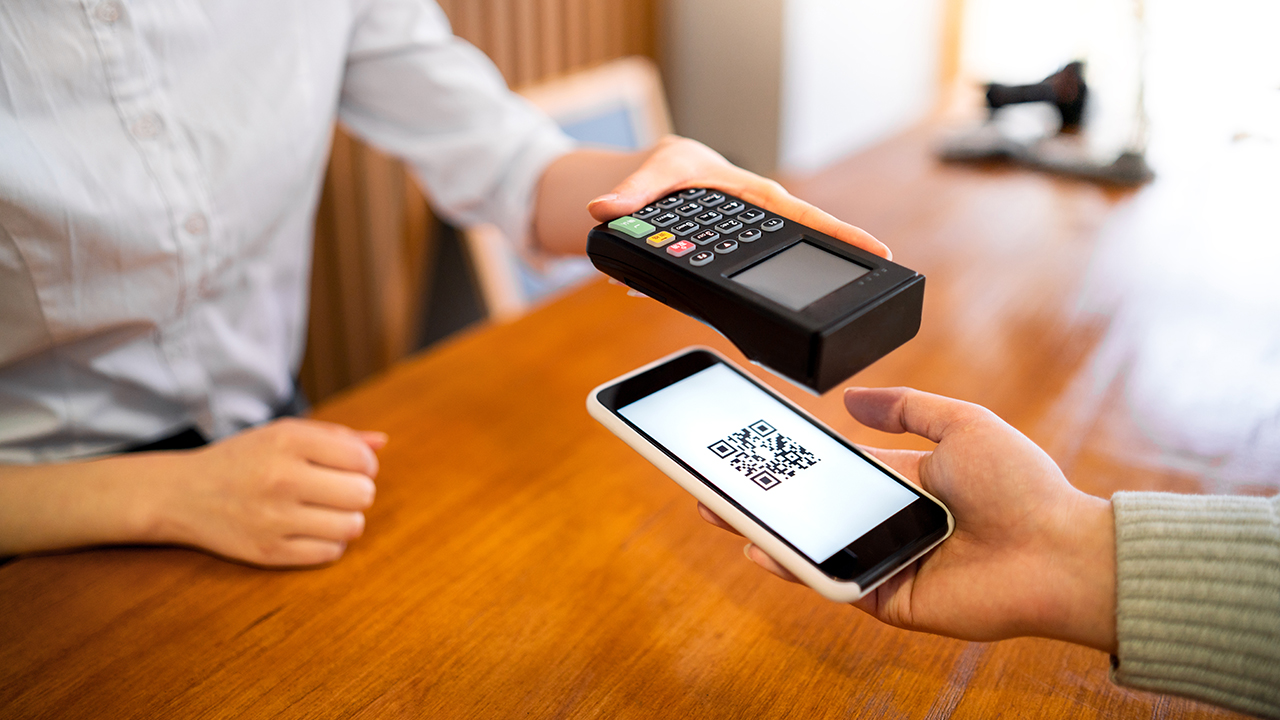By taking advantage of 4G LTE and 5G connectivity, retailers can provide customers with new ways to discover and access products and services in-store and online. Currently, 5G adoption sits at just 13%, but that won’t be the case for long — according to a
recent survey of U.S. retailers, 5G adoption is expected to triple by 2024.
From digital signage and self-replenishing inventory systems to real-time payment platforms, many leading retailers have already integrated 4G and 5G connectivity into every aspect of their business. As in-store services evolve, the amount of data generated — and the challenges retailers can solve with that data — continues to grow.
To act on that data and deliver modern digital experiences at scale, today's retailers need fast, reliable connectivity across sites saddled with highly variable technical infrastructure and environmental conditions. Despite these challenges, retailers can use 4G LTE and 5G-enabled devices to achieve their business goals in an increasingly competitive market.

The Range of Connected Use Cases for Retail
To date, 4G LTE networks have been available for commercial use for over a decade, and in that time, organizations across all industries have stood up new and exciting use cases that weren’t possible with previous generations of network technology.
Today, competitors are racing to take advantage of the benefits of higher bandwidth and faster throughput that 5G networks have to offer. Thanks to the growing availability of stronger, faster 5G networks, retailers can deploy a wide range of speed and bandwidth-hungry applications, from real-time inventory management to kiosk connectivity with secure and reliable transactions, and even robots to scan stores and alert workers to replenish shelves. Moving into the future, we will see retailers expanding into exciting new use cases using technologies such as augmented reality and virtual reality to enable virtual “try on” applications.
With the rapid deployment of 5G networks, retailers can use AI/ML to offer more compelling in-store experiences for customers. Whether it’s digital signage for ever-changing displays or the point-of-sale (POS) system at checkout, IoT devices have become an essential tool for bringing modern retail experiences to life.
Every day, retailers must handle everything from managing inventory and staff scheduling to testing new sales tactics, promotions and in-store displays. As many of these core activities have become digitized over the years, retailers have found new opportunities to optimize their operations for maximum efficiency, customer satisfaction and business growth.
Future Use Cases for 4G and 5G in Retail
The POS systems or in-store kiosks are often the most common starting point for retailers at the beginning of their 4G or 5G adoption journey. Kiosks present a particularly interesting challenge for retailers, as they can be placed outside of storefronts. Whether outdoors or part of a larger building such as a shopping mall or event space, these devices often need:
● High-bandwidth, low-latency wireless connectivity.
● The ability to withstand variable conditions.
● Security capabilities in case of a physical or digital breach.
Today’s retailers are deploying larger and larger fleets of Internet of Things (IoT) devices, giving them the opportunity to gather more on-site data, operate more intelligently and branch out into more advanced connected use cases. As a result, these three requirements only become more essential to their business success.
As 5G adoption spreads in the industry, large retail operations can use infrastructure management solutions to make sweeping changes across retail locations. With the right management platform, an organization operating hundreds or even thousands of stores can update pricing on digital displays, software on kiosks and more with just a few clicks.
.jpg)
Identifying Barriers to Realizing Connected Use Cases in Retail
Customers now have a massive appetite for up-to-date information, personalized experiences, and seamless service across all their retail experiences. They want to know as much as possible about prices, in-store inventory and reviews based on their purchase history, as well as an effortless check-out process.
Meeting these expectations requires standing up a robust, omnichannel shopping experience combined with an intelligent supply chain, something that has proved difficult for many retailers. According to recent research from McKinsey, retailers leading the digital race have one advantage in common: a technical foundation designed for the next wave of transformation.
The network a business chooses to deploy is the foundation for any real-time or personalized experiences. Its speed, security and resilience have downstream effects on every device and system that relies on that network for data transfer.
In any industry, businesses often have several viable options for connectivity. For example, using Wi-Fi networks or private cellular networks. There are significant pros and cons to each that retailers need to weigh against the technical and business requirements for their desired use cases.
What Network Technology Is Right for Me? Wi-Fi, Cellular or Both?
To determine whether to deploy Wi-Fi or private cellular networks, or both, retailers need to consider these questions:
● Is the reliability of the connected device essential for business transactions to continue?
● Will the speed of data transfer between devices, systems and distributed sites inhibit the desired use case?
● How will technical staff manage a large fleet of connected devices across one or more sites?
Wi-Fi networks can be much more unreliable and less secure, when compared to private cellular networks. Returning to the example of a kiosk in a shopping mall, an offline Wi-Fi connection could represent a significant opportunity cost for today’s retail businesses. In just the last few years, the global market for interactive kiosks has exploded. That market is projected to reach $49.9 billion by 2031, a dramatic jump from $16.1 billion in 2019.
Even in cases where Wi-Fi networks offer sufficient bandwidth and coverage, cellular networks can serve as an overlay for critical digital services. Private cellular networks can also allow retailers to stand up new stores more quickly, as deploying cellular is much faster than trenching, installing and patching wireline into a new building or development.
As a result, more retailers are experiencing the business benefits and cost savings of 5G connectivity. Soon, adopting 5G connectivity will become table stakes for competitive retail organizations.
When to Choose 4G LTE vs 5G Solutions for Retail Connectivity
Implementing connectivity use cases via a private cellular network allows stores to retain flexibility and reduce costs. IT systems and devices can be relocated easily, as an entire store can be blanketed with a strong signal from a single network access point.
Additionally, with 5G routers, retailers can reliably transmit high volumes of data at fast rates. As a result, they can gather and send data rapidly throughout the local network, allowing them to do things like stream video on digital signage, send personalized alerts to shoppers’ devices and more.
Retailers can use Digi 4G and 5G solutions, including the Digi EX12, the Digi EX15 and the Digi EX50 cellular routers, to support indoor use cases like:
● In-store kiosks like self-service vending machines and ATMs
● Indoor digital signage with static, dynamic, and streaming media content
● POS systems and intelligent inventory
● High-resolution video processing and imaging for virtual try-ons, security, and other applications
With the Digi EX50 cellular router, retailers can future-proof their device network for 5G adoption, in anticipation of any use cases where they need faster data transmission or higher bandwidth connections. At the same time, retailers can include Digi EX12 and Digi EX15 routers in their network for a more affordable option when 4G connectivity still fulfills their needs. Often retailers start their digital transformation with a specific use case, and then add on other use cases as they see the benefits.
Digi also offers industrial 4G solutions — including the Digi IX20 and Digi IX30 cellular routers — for outdoor retail use cases that need devices designed for variable environmental conditions, such as:
● Outdoor POS systems
● Interactive outdoor displays or digital billboards
● Unattended retail kiosks like merchandise vending machines, gas pumps, movie rental kiosks and ATMs
● Security cameras with real-time intelligent monitoring

Scaling 4G and 5G Device Management in Retail with Digi
Together, Digi solutions for retail offer an integrated connectivity experience that allows retailers to support use cases across all their environments. Retailers can benefit from the streamlined control that Digi Remote Manager® offers, whether they have IoT devices deployed in controlled, indoor environments or in more challenging conditions found across the supply chain.
Digi’s suite of 4G and 5G connectivity solutions is designed for seamless integration, trusted performance and availability retailers can count on. Most Digi routers, including the Digi EX50, feature dual-SIM slots, which allows users to plan for carrier failover in areas with spotty coverage or in the event of unexpected network downtime.
Combined with these cellular solutions and Digi AnywhereUSB® Plus, Digi Remote Manager delivers the mass configuration, network compliance and out-of-band management retailers need to scale their connected use cases. And Digi’s remote management platform allows organizations to easily integrate their IoT platforms with their preferred infrastructure management products, such as:
● Opengear for business continuity and network resilience
● Ventus for managed network-as-a-service solutions
● SmartSense for monitoring and management solutions in retail and supply chain
With Digi, retailers can rely on a single IoT command center to implement advanced, data-driven use cases at scale, while cutting down on wireless connectivity costs, minimizing unplanned network downtime and improving the customer experience. By taking over many labor-intensive, manual tasks, Digi Remote Manager allows retailers to increase efficiency, security and productivity by:
● Reducing the risk of human error in routine IT maintenance
● Implementing ongoing scanning and automated firmware updates
● Eliminating the need for on-site maintenance while keeping teams up-to-date with customizable notifications
● Preventing unauthorized changes to device or network configurations
● Allowing IT staff to focus on higher value work

Advance Your Retail Capabilities with Digi
Retailers across all sectors, from fashion and CPG to technology and home appliances, have shifted their business model to take advantage of the demand for digital shopping experiences. Despite this widespread trend, many retailers are still struggling to modernize IT and IoT infrastructure that is ill-prepared for the connected use cases they need to remain relevant and competitive.
With Digi EX50 5G, retailers can take advantage of today’s fastest available networks to optimize their customer experience for increased sales, satisfaction, and brand loyalty. And with Digi Remote Manager, retail organizations can easily manage massive fleets of cellular routers and connected devices, allowing them to deliver interactive experiences and tap into real-time intelligence across their retail supply chains.
Learn more about how Digi solutions for 5G can unlock the wireless networking capabilities your retail organization needs.
Next Steps